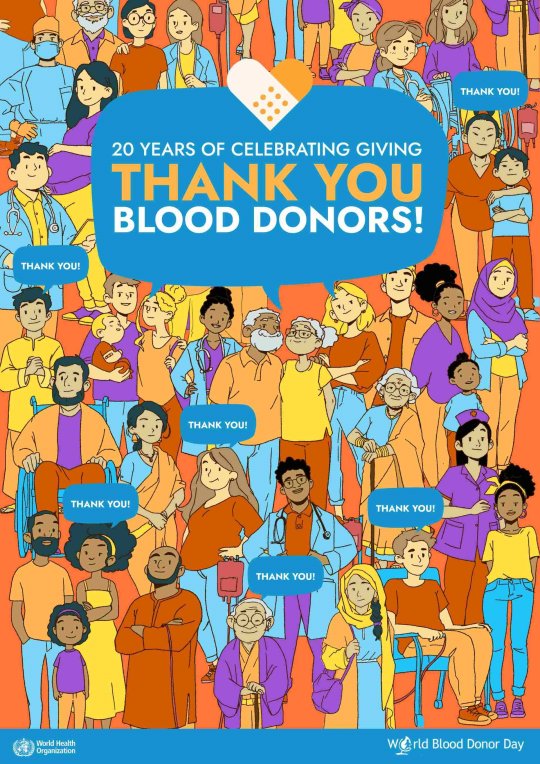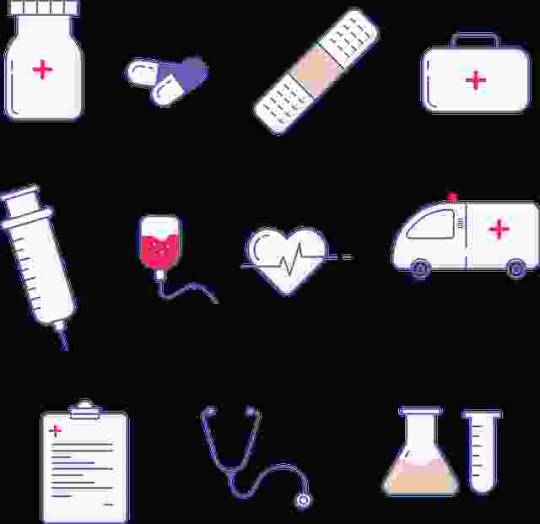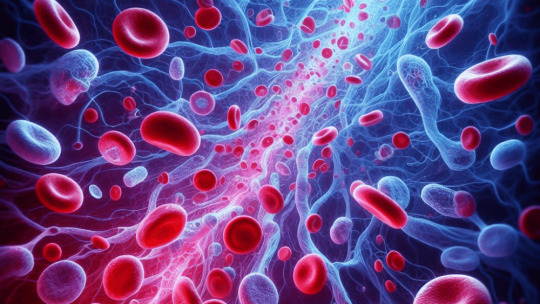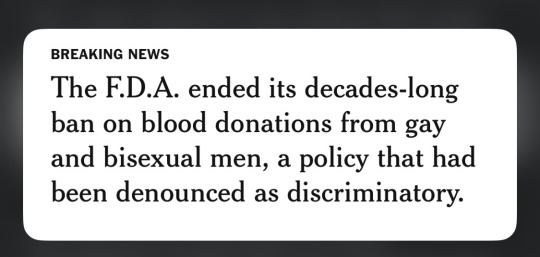#sickle cell disorder
Explore tagged Tumblr posts
Text
happy disability pride month to those with conditions no one talks about, online or in general:
multiple sclerosis (me lol)
marfans
cerebral palsy
bells palsy
hidradenitis suppurativa
cauda equina syndrome
mixed connective tissue disorder
hyperadrenergic pots
non hypermobile eds types
stickler syndrome
mitochondrial disease
cystic fibrosis
sickle cell disease
myasthenia gravis
post-cholecystectomy syndrome
SWAN (syndromes without a name)
...just to name a few. i see you and you deserve awareness and understanding.
this list is non exhaustive, rb with other conditions you want to see represented!!

[ID: a post banner with dark red background and medium grey bolded text in the center. it reads “This post is about physical disabilities, do not derail.” On each side there is the dynamic disability icon, a gray symbol of person in manual wheelchair leaning forward with arms bent behind them mid-push. /end ID]
#disability pride month#disability pride#cpunk#cripple punk#multiple sclerosis#marfan syndrome#cerebral palsy#bells palsy#hidradenitis suppurativa#cauda equina syndrome#mixed connective tissue disorder#hyperandrenergic pots#eds#ehlers danlos syndrome#stickler syndrome#mitochondrial disease#cystic fibrosis#sickle cell disease#myasthenia gravis#post-cholecystectomy syndrome#swan#syndrome without a name
10K notes
·
View notes
Text
Includes genetic disorders, autism, adhd etc
#poll#polls#tumblr polls#pollblr#augmented polls#autism#neurodivergent#actually autistic#adhd#genetic disorders#cerebral palsy#learning disability#dyspraxia#intellectual disability#spina bifida#cystic fibrosis#fetal alcohol syndrome#fasd#sickle cell anemia
15 notes
·
View notes
Text
Foods for Cancer Patients with No Appetite
Cancer treatments often lead to a decreased appetite, making proper nutrition challenging. Maintaining adequate nutrition is crucial for supporting overall health and recovery. Here are some effective strategies and nutrient-dense foods to help cancer patients with low appetites.
How Cancer Affects Appetite:
Nausea and Vomiting: Common side effects that make eating difficult.
Changes in Taste and Smell: Treatments can alter food preferences.
Fatigue: Reduces energy for meal preparation and eating.
Mouth Sores: Painful sores can hinder eating.
Digestive Issues: Bowel changes can impact appetite and nutrient absorption.
Importance of Nutrition:
Maintains Strength and Energy: Supports daily activities.
Supports Immune Function: Helps fight infections.
Promotes Healing: Aids in recovery and tissue repair.
Manages Side Effects: Certain foods can alleviate symptoms.
Improves Quality of Life: Enhances mood and overall well-being.
Nutrient-Dense Foods:
Protein-Rich Foods: Eggs, Greek yogurt, tofu, tempeh, beans, and lentils.
Healthy Fats: Avocado, nuts, seeds, olive oil, coconut milk, and nut butters.
Complex Carbohydrates: Whole grains, legumes, fruits, vegetables, sweet potatoes, and whole grain bread.
Strategies to Improve Appetite:
Small, Frequent Meals: Less overwhelming and easier to manage.
Enhance Flavor and Texture: Use spices, try different cooking methods, and serve at room temperature.
Stay Hydrated: Drink water, herbal teas, and eat hydrating foods like watermelon and oranges.
Maintaining nutrition is essential for cancer patients, even with a reduced appetite. Consult a healthcare provider or dietitian for personalized advice.
Read the full blog here.
#cancer#immune deficiency disorders#lymphoma#multiple myelomas#platelet disorders#leukemia#sickle cell anemia#thalassemia#blood clotting#malignant disorders#aplastic anemia#blood cancer treatment in india#cancer survivor#foods for cancer patients
2 notes
·
View notes
Text
Thank you, blood donors for your lifesaving gift.

Mr. David Dandridge Jr. and his three children were born with sickle cell disease, a genetic blood disorder that can cause severe pain, tissue and organ damage, and even strokes. Both David and his daughter, Skylar, have endured pain crises and relied on blood transfusions to treat the unbearable levels of pain.This World Blood Donor Day, we share our gratitude for those who make the time to donate blood, for patients just like David and Skylar. Thank you for rolling up a sleeve! :heart: #TeamUp4SickleCell
vimeo
0 notes
Text

The commonly seen congenital disorders are:
1. Down Syndrome:
• Cause: Trisomy 21 during conception, linked to maternal age.
• Characteristics: Includes musculoskeletal issues, thyroid dysfunction.
• Diagnosis: Non-invasive prenatal testing, genetic screening.
• Treatment: Personalized healthcare with early intervention.
2. Cleft Lip and Palate:
• Cause: Genetic predisposition, environmental factors.
• Characteristics: Encompasses visible and psychological aspects.
• Diagnosis: Improved prenatal diagnoses through imaging, genetic testing.
• Treatment: Surgical correction, ongoing regenerative medicine research.
3. Congenital Heart Defects:
• Cause: Genetic, environmental factors, maternal influences.
• Characteristics: Examines neurodevelopment, overall quality of life.
• Diagnosis: AI and machine learning for early detection.
• Treatment: Beyond surgery, regenerative therapies, precision medicine.
4. Neural Tube Defects:
• Cause: Genetics, maternal nutrition, environmental factors.
• Characteristics: Focus on long-term neurological impacts.
• Diagnosis: Advanced imaging, molecular diagnostics.
• Treatment: Surgical interventions, neuroregenerative approaches.
5. Cystic Fibrosis:
• Cause: Complex genetic mutations, cellular mechanisms.
• Characteristics: Beyond respiratory, digestive impacts, considers psychological, nutritional aspects.
• Diagnosis: Precision medicine, advanced genetic testing.
• Treatment: Gene therapies, targeted medications advancements.
6. Sickle Cell Anemia:
• Cause: Genetic, molecular intricacies.
• Characteristics: Examines long-term impacts beyond clinical manifestations.
• Diagnosis: Early detection through genetic testing, newborn screening.
• Treatment: Exciting prospects with gene-editing technologies.
7. Hemophilia:
• Cause: Genetic, molecular underpinnings.
• Characteristics: Broader impact on joint health, quality of life.
• Diagnosis: Precision enhanced by molecular profiling.
• Treatment: Beyond clotting factor replacement, explores gene therapies.
8. Muscular Dystrophy:
• Cause: Specific genetic mutations associated with different forms.
• Characteristics: Progression impacts respiratory function, cardiac health.
• Diagnosis: Advanced imaging, molecular diagnostics.
• Treatment: Research into gene therapies, exon-skipping, pharmacological approaches.
9. Spinal Muscular Atrophy:
• Cause: Genetic intricacies, modifier genes, environmental influences.
• Characteristics: Beyond motor deficits, impact on respiratory function.
• Diagnosis: Advances in genetic testing, newborn screening.
• Treatment: Evolving landscape with gene-targeted therapies.
10. Williams Syndrome:
• Cause: Genetic deletions, insights into neurodevelopment.
• Characteristics: Encompasses delays, facial features, cognitive strengths/challenges.
• Diagnosis: Advanced genetic testing for accurate, early diagnoses.
• Treatment: Tailored education, early intervention, cardiovascular management.
Early diagnosis of the above conditions can be made with the help of regular full body health checkups for your child. You can opt for a full body health checkup at Indraprastha Apollo Hospitals in New Delhi, which is regarded to be one of the finest hospitals in Delhi.
#congenital disorders#down syndrome#muscular dystrophy#williams syndrome#cystic fibrosis#spinal muscular atrophy#hemophilia#sickle cell anemia#neural tube defects#congenital heart defects#cleft lip#cleft palate#genetic testing#newborn screening#imaging tests#full body health checkup#regular health checkups#health checkup packages
1 note
·
View note
Text
The FDA has granted approval for the first gene therapies designed to treat individuals affected by sickle cell disease

- By Nuadox Crew -
Today, the FDA approved two groundbreaking gene therapies, Casgevy and Lyfgenia, as the first cell-based treatments for sickle cell disease (SCD) in patients aged 12 and older.
Casey employs CRISPR/Cas9 technology, editing patients' blood stem cells to increase fetal hemoglobin production, preventing sickling of red blood cells. Lyfgenia uses a gene therapy-derived hemoglobin to reduce the risk of sickling. Both therapies involve a one-time infusion of modified stem cells after chemotherapy.
Casgevy showed efficacy in preventing severe vaso-occlusive crises (VOCs) in 93.5% of patients, while Lyfgenia led to vaso-occlusive event (VOE) resolution in 88% of cases.
Side effects included low blood cell levels and mouth sores. However, Lyfgenia carries a warning for potential blood cancer development, requiring lifelong monitoring.
These therapies received expedited reviews and designations due to their significance in addressing severe health impacts.
--
Source: U.S. Food and Drug Administration (FDA)
Read Also
Study: Sickle cell disease 11 times deadlier than previously recorded
#fda#usa#sickle cell#blood#blood disorders#pharma#health#Casgevy#Lyfgenia#crispr#genomics#gene therapy#medtech#biotech#medicine
0 notes
Text
In 1983, at a conference on gene therapy, Ola Huntley, the mother of three sickle-cell anemic children and a counselor of sickle-cell patients, declared, "I am angry that anyone presumes to deny my children the essential genetic treatment of a genetic disease. I see such persons as simplistic moralists."
"In the Name of Eugenics: Genetics and the Uses of Human Heredity" - Daniel J. Kevles
#book quotes#in the name of eugenics#daniel j kevles#nonfiction#80s#1980s#20th century#conference#gene therapy#ola huntley#sickle cell anemia#sickle cell disease#mother#counselor#angry#children#treatment#genetic disorders#simplistic#moralist
0 notes
Text
Why the Spleen Sucks
The spleen is a really shittily placed organ, making it prone to injury. This injury is usually severe and can lead to death if not properly managed. We're going to look at the function of the spleen, what happens when it is damaged, and how to write about.
Where is the spleen? It's in the upper left quadrant of the abdominal cavity, nestled right against the ribs (typically 9-11) at the midaxillary line. It's behind the stomach and is considered intraperitoneal. The main thing is that the spleen is very vulnerable. It is literally right up against the ribs without much protecting it. It's shaped like a little bean and is purple in humans. It is fed by the splenic artery, which comes off of the celiac trunk (which sticks off of the abdominal aorta).
What does the spleen do? Its main job is to filter out old and malformed red blood cells. It also holds immune cells. Certain diseases can cause the spleen to enlarge, including cirrhosis of the liver (it's connected to the hepatic portal system), sickle cell anemia (RBCs are stuck in it), and autoimmune disorders. The spleen also holds about 250 mL of RBCs in reserve in case you need them.
What happens when it is injured? The spleen can be ruptured and lacerated kinda easily. Blunt trauma to the ribs can cause it to rupture, and this is seen in contact sports and car accidents mostly. Because of those giant gaps between the ribs, it's also prone to injury from knife attacks. Gunshot wounds are another common cause, as well as broken ribs penetrating it (broken ribs are very sharp, like way sharper than you imagine). Rupture is more likely when someone has splenomegaly.
When the spleen is damaged, you're going to get a lot of intraperitoneal hemorrhaging. The spleen filters a lot of blood and has blood in it, so there's going to be a lot of blood in the abdomen (obviously). This will lead to distention, guarding (abs are tense), and hypovolemia. The left upper quadrant will be painful, and there can also be referred pain to the left shoulder (Kehr's sign).
If the patient has a small laceration, the symptoms aren't always as dramatic. Sometimes they'll just have low hemoglobin (which is on RBCs), maybe some thrombocytopenia (lots of platelets in the blood).
How do you fix this? If the injury is small and the patient is hemodynamically stable, they can usually be given a blood transfusion and the spleen can heal itself. Sometimes surgery is also performed to clamp a vessel or repair the outer layer of the spleen.
If the injury is major, then surgery will be performed. If the patient is less critical, they may go in and try to fix the problem. If it can't be fixed, they may do a splenectomy (remove the spleen). In a critical patient, they might forgo the nice pretty incision on the left side, and instead just split the patient down the middle. In these situations (in my experience), there isn't a lot of time to waste. One thing that we aren't going to waste time on is anesthesia, for example. This is with a lot of very critical surgeries, at least from what I have seen. Like the surgeon will start cutting as they are working on knocking out the patient, but usually they are in so much pain that they don't even register it.
If you remove the spleen, the patient is more at risk for infections, but with modern medicine and vaccinations, it's not as much of a big deal as it used to be. The patient will probably be fine.
Writing tips: (new section idea, hope you guys like it, lol) As with any injury, you have to make sure that you are giving them an acceptable mechanism of injury. With the spleen, this is either blunt trauma or penetration/laceration. Getting tackled, getting stabbed, getting shot, all great MOIs.
Second thing, present the appropriate signs and symptoms. A sign would be like bruising, hypotension, tachycardia, etc. A symptom would be LUQ pain, Kehr's sign, etc.
Next, figure out what you're going to do and where you're going to do it. In the field, there probably isn't much you can do. The most would probably be a laparotomy and clamping the splenic artery, but I mean, when I was an EMT, we were not doing this. There's a lot of stuff you can theoretically do, but never gets done. But I mean you can write it. If the patient makes it to the hospital, I think it would be more fun to do emergency surgery and just split them right down the middle. There's going to be a lot of blood in the greater omentum, very high stakes and exciting.
Anyways, hope you guys liked this, please let me know if I got anything wrong. I wrote this off of my personal experience and a few good textbooks, but there can always been mistakes in things.
#medicine#med student#medical school#biology#med school#med studyblr#whump writing#anatomy#spleen#hospital whump#surgery#emergency medicine#medical writing#writing reference#injury
69 notes
·
View notes
Note
this hasn't happened to me in a long while, but when I was a kid getting weighed I remember a doctor pulling out a separate BMI chart for Asians with lower cutoffs. this was around a decade ago. no doctors have done this since. is that like, normal? or in any way meaningful?
'normal', unfortunately yes---I don't know that I've heard of doctors actually making up charts for this but it is a commonly held belief among physicians and epidemiologists that BMI cutoffs should be lower for Asians than for whites, because Asians supposedly have higher rates of weight-correlated adverse health outcomes (diabetes, CVD, &c) at the same BMIs.
meaningful is a different matter. there are two major and really damning issues with this belief:
firstly, the (handful of) studies documenting this disparity have all the same issues as any other medical literature on weight and health. we don't actually have good evidence to say that weight causes these health outcomes; it's difficult to disentangle environmental factors, or the fact that disease can often cause the weight gain itself, as in the case of diabetes or 'metabolic syndrome'. weight stigma, not interchangeable with weight itself, has a massive and documented negative effect on health outcomes. also, as far as I can tell, most if not all of the studies on this particular question seem to have been done using Asian-American subjects specifically, so that opens a whole host of further statistical ambiguities: you're talking about immigrant populations in the US. physicians love to interpret shit like this as evidence of biological racial differences instead of probing questions like: does this suggest that Asian immigrants to the US are subjected to forms of marginalisation that cause particular health effects? and the usual critiques of weight science include the problem that long-term deliberate weight loss is not achievable for th vast majority of people save through the development of behaviours that would otherwise be identified as eating-disordered, so BMI chart cutoffs are of pretty limited value for individual health guidance even if we were confident in their causal relationships.
secondly, and arguably even more fundamentally, any data that purport to differentiate people on the basis of race are data that are using an invented social category, not a 'natural' or biological one. there are absolutely health outcomes and conditions that affect different populations at different rates or with varying effects. but 'Asian' is not a coherent category genetically, epigenetically, historically, physiologically, or anything else. it's no more a 'real' biological grouping of people than 'white' or any other racial category. these are social designations, they're not biological facts. medicine that purports to display sensitivity to marginalised groups by reifying the biological ideology that defines them is reactionary at its core, and is not even solving the problems people think it is. when we lean on the idea of racial health disparities, we're basically relying on a crude average of a whole bunch of different people and groups who have been socially slotted into one 'race' category. this doesn't help people; on the contrary, it often obscures the actual rates of particular health issues in different populations: for example, the gene responsible for sickle cell anemia is common in families from many parts of the world, and sickle cell anemia is not a 'race-based disease' but an inherited genetic disorder. the allure of 'innate racial differences' as an etiological explanation is still pervasive and pernicious in medicine as elsewhere. Rana Hogarth talks about this in the epilogue to Medicalising Blackness, and I've also heard Iris Clever discuss it in conferences, although to my knowledge her published work focusses more on the epistemological architecture of genetic and anthropological databases. anyway my point is that, even if we solved all the issues raised in part 1 above and were confident that we had indeed pinpointed BMI cutoffs causally linked to adverse health effects, it still would be harmful and not helpful to set these cutoffs on the basis of 'race', which is a social system of categorisation and marginalisation and has no biological basis or 'natural' justification.
61 notes
·
View notes
Text

Fuck yes! This is great news!
I can't tell you how excited and happy this makes me. Blood and platelet donation are really important and only a fraction of eligible donors do it. The policy WAS discriminatory (no thanks for the hedging, NYT), and although it was cut down from a lifetime ban to a year ban and then in 2020 down to three months, gay men who were eligible were still sometimes subjected to extra questioning essentially asking if they were telling the truth. Furthermore, because the policy was based around crude birth-assignment ideas of "men" and "women" I've heard stories form both binary and nonbinary trans people about blood bank staff treating them with hostility and suspicion. This is a massive step towards making sure that queer and trans donors get treated with dignity and respect.
I have talked on here about being a regular donor and my delicious AB+ blood but I may not have mentioned that, although I am a cis woman, I had a lifetime ban on donating for years because the policy covered not only men who have had sex with other men but also anyone else who had ever had a male partner that had ever had sex with another man. I actually go to the place I do because the place I initially asked at still adhered to the lifetime ban.
Donated blood and platelets are really important for treating cancer, blood disorders like sickle cell anemia, surgery, burns, childbirth, and more. If you don't know whether you're eligible to donate or if you were banned in the past, check! There have been a number of reforms to the guidelines in the last few years.
292 notes
·
View notes
Text

A group of disorders that cause red blood cells to become misshapen and break down.
With sickle cell disease, an inherited group of disorders, red blood cells contort into a sickle shape. The cells die early, leaving a shortage of healthy red blood cells (sickle cell anemia), and can block blood flow causing pain (sickle cell crisis).
Infections, pain, and fatigue are symptoms of sickle cell disease.
Treatments include medications, blood transfusions, and rarely a bone-marrow transplant.
#sickle cell anemia#sickle cell disease#sickle cell awareness#doctor#health and wellness#cash app#healthcare#african american#blood cells#anemoia#red blood cells#black tumbler#black health#healthconcerns#healthylifestyle#black americans#blood#black healthcare
12 notes
·
View notes
Text
Nami's intro!





MY ASK GAMES (they're all the same, just different fonts/cosmetics!):
Pastry/Sweets themed yandere ask game
Sea/ocean/tropical themed yandere ask game
Floral themed yandere ask game

ANONS:
-🍰 anon
-🪡 anon
-✨ anon
-🌰 anon
-🌌 anon
-🦝 anon
-🖥️ anon
-🦠 anon
-🩹 anon
-🐍 anon
-🌹anon
-🐻anon





Hello Hello!~ I'm Nami, if you couldn't already tell ^^''
I come from a very small village in Finland, where beaches/the ocean and the stars are worshipped. I'll be using this blog as my little ramble wall for my yandere tendencies. (*^‿^*)
A little background about me; I've been a Japanese exchange student in Okinawa, Kyoto and Numazu; my greatest wish is to go back one day, this time to experience the high school life.
My Aesthetics include: Jirai Kei, Scene and Himekaji!
My diagnoses include: C-PTSD; BPD (Type 1 and 4), Bipolar disorder; and Leukocytosis along with sickle cell anemia.
A bit of my background: I've been hospitalized my whole life for my weak body; Everyone around me from the day I was born have subjected me to almost every category of abuse.
My hobbies: Gardening; Kendo/Kenjutsu, Writing, piano, cosplay, baking, cleaning, sewing. Housewifing (cooking, baking, cleaning). Art, stargazing, tarot readings.
My passions: Japanese history and folklore; Forensic Pathology and medical science; My garden; especially my tangerine orchard! ヽ(>∀<☆)ノ
Favourite food: Tangerines, Taiyaki, Takoyaki, Kakigōri(─‿‿─)♡
Favourite song: Edo Gimmick; Sunshine Pika Pika Ondo; Secret Garden, Backlight; Where the wind blows, Propose, Insanity.
Favourite artists: Ado, Rebzyyx
Favourite color: Cyan, Orange; Fuschia.
Words that describe me: Internet, sleeping, chronically online (ಥ﹏ಥ)
I'M 15 YEARS OLD SO 20+ DNI!!!
Dislikes/hate: CHEATERS; CHEATERS!! spiders and bugs.
Favourite animal: Fox, Seal and Tiger
Favourite youtubers: Pewdiepie, Markiplier, Ulttis, Sillis, LDshadowlady, Ihascupquake, flamingo, Jacksepticeye, MKGamerr, Caseohh
Favourite flower; Buttercups, chocolate cosmos, spiderlily, bleeding heart, Weeping Begonia.
Personality explained with a few words: Extremely shy, to the point I can be perceived as stern (╯_╰)
Hyperfixations: Minecraft Storymode, One Piece, Love Live School Idol Project, Creepypasta.
all my fandoms: (I dont know if i forgot to put my dear hatchet man but it's supposed to be there. along with horimiya and a bunch of other rpg horror games)
NOTE; IM IN A LOOOT OF OTHER FANDOMS SO I TEND TO FORGET!!! (i forgor to put huniepop..=)


My top kins: Shirahoshi; Akane Kurokawa; Mikan Tsumiki; Kobeni; Toriel; Mafuyu Asahina; Nene Kusanagi; Chara; Kris; Kotonoha Katsura; Yuri (DDLC); Pomni;
MBTI: ISFJ (SI FE TI NE)
TRITYPE: 692
ENNEAGRAM: 5W4
SOCIONICS: SEI
ATTITUDINAL PSYCHE: LEFV
MORAL ALIGNMENT: CHAOTIC NEUTRAL
BIG 5: NEUROTICISM
BIG 5(SLOAN): RLUAI
SEXUAL: 3 and/or 5
INSTINCTUAL VARIANT: SP/SX
AGREABLENESS: 75%
CONSCIENTIOUSNESS: 75%
OPENNESS 80%
TEMPERAMENT: MELANCHOLIC DOMINANT
SUN SIGN: AQUARIUS
MOON SIGN: ARIES
RISING SIGN: GEMINI
ZODIAC: AQUARIUS
BIRTHDAY: JANUARY 22ND

BOUNDARIES!

Anti's, Fetishizers, homophobes, judgmental people, terfs, etc DNI!!!
20+ DNI!!!
INTERACT: other irl yandere's!! Everyone with the same interests as me!

And that's about that.. ╮( ̄ω ̄;)╭
Thank you for visiting my page!!!_:(´ཀ`」 ∠):_

#irl yandere#obsessive love#yandere#actual yandere#yanblr#yanderecore#female yandere#yan blog#yancore#irl yan#yandere girl#clingy yandere#spilled thoughts#intro post#yandere thoughts#obslove#obsessive thoughts#obsessive yandere#actually obsessive#yandere blog#yandere things#yandere tendencies#yande.re#yandere gf#yandere community#obsession#obsessivecore#Nami's seaside🦭🌊#actually bpd#bpd thoughts
18 notes
·
View notes
Text
How to Spot HLH Disease?
Hemophagocytic Lymphohistiocytosis (HLH) is a severe condition where the immune system becomes overactive, attacking the body��s tissues. Early identification is crucial to prevent rapid progression and severe illness. This guide outlines the symptoms and early warning signs of HLH, helping you understand when to seek medical attention.
What is Hemophagocytic Lymphohistiocytosis?
HLH is a disorder where the immune system attacks healthy cells, causing excessive inflammation and tissue damage. It can be inherited (Primary) or acquired (Secondary) and often resembles severe infections or inflammatory conditions.
Types of HLH
Primary (Familial) HLH: Genetic, diagnosed in infants and young children.
Secondary (Acquired) HLH: Triggered by infections, autoimmune diseases, or cancers, and can occur at any age.

Symptoms of HLH
HLH symptoms can be nonspecific and similar to other conditions. Key symptoms include:
Fever: Persistent high fever, unresponsive to treatment.
Fatigue and Weakness: Extreme tiredness and difficulty performing daily tasks.
Enlarged Liver and Spleen: Abdominal swelling and palpable organs.
Rash: Red or purplish skin spots, usually non-itchy.
Swollen Lymph Nodes: Tender lymph nodes in the neck, armpits, or groin.
Neurological Symptoms: Persistent headaches, seizures, and mental changes.
Early Warning Signs of HLH
Recognizing early signs can be lifesaving:
Persistent High Fever: Lasts more than a week, unresponsive to medication.
Fatigue and Loss of Appetite: Sudden fatigue and weight loss.
Unusual Bruising or Bleeding: Easy bruising and frequent nosebleeds.
Abdominal Pain and Swelling: Discomfort and swelling, especially in the upper left side.
Neurological Symptoms: Persistent headaches, confusion, and seizures.
When to Seek Medical Attention?
Seek medical help if you notice severe and persistent symptoms, rapid symptom progression, or multiple HLH symptoms simultaneously. High-risk groups, including those with a family history of HLH or underlying conditions, should be particularly vigilant.
Wrapping Up
Early detection of HLH is crucial for effective treatment. Recognize the symptoms and seek timely medical help to avoid severe complications. Awareness and prompt action can make a significant difference in managing HLH effectively. If you notice persistent or severe symptoms, consult a healthcare professional immediately.
Read the full blog here.
#leukemia#platelet disorders#multiple myelomas#sickle cell anemia#thalassemia#immune deficiency disorders#aplastic anemia#lymphoma#malignant disorders#blood clotting#hlhs
0 notes
Text
Genetic engineering: CRISPR and beyond
In genetic engineering, we find ourselves amidst a scientific revolution with the advent of revolutionary technologies like CRISPR-Cas9. However, our journey into the intricate landscape of genetic manipulation is far from complete. This post delves into the nuanced world of genetic engineering, exploring cutting-edge technologies and their remarkable potential in shaping the future of medicine and biotechnology.
CRISPR-Cas9: Precision at the Molecular Level
CRISPR-Cas9, a revolutionary genome editing tool, stands for Clustered Regularly Interspaced Short Palindromic Repeats and CRISPR-associated protein 9. It utilizes a guide RNA (gRNA) to target specific DNA sequences, and the Cas9 protein acts as molecular scissors to cut the DNA at precisely defined locations. This break in the DNA prompts the cell's natural repair machinery to make changes, either through non-homologous end joining (NHEJ) or homology-directed repair (HDR). CRISPR-Cas9's precision allows for gene knockout, modification, or insertion with remarkable accuracy.
Beyond CRISPR: Emerging Technologies
While CRISPR-Cas9 has dominated the field of genetic engineering, numerous promising technologies have emerged on the horizon. These include CRISPR-Cas variants like CRISPR-Cas12 and CRISPR-Cas13, which offer unique advantages such as smaller size, increased specificity, and targeting of RNA. Additionally, base editing techniques, such as adenine base editors (ABEs) and cytosine base editors (CBEs), enable the direct conversion of one DNA base into another without causing double-strand breaks, expanding the range of genetic modifications possible.
Applications in Medicine
The implications of these advancements are profound, particularly in medicine. Genetic engineering can potentially treat various genetic disorders, from cystic fibrosis to sickle cell anemia, by correcting disease-causing mutations at their source. Precision medicine, tailored to an individual's genetic makeup, is becoming increasingly feasible, allowing for personalized therapies with minimal side effects.
Ethical Considerations and Regulation
As we venture further into the genetic frontier, we must acknowledge the ethical considerations surrounding genetic engineering. The ability to modify the human germline, with implications for future generations, raises ethical dilemmas that necessitate rigorous oversight and regulation. The international community is developing guidelines to ensure responsible use of these powerful tools.
Future Directions and Challenges
While genetic engineering offers immense promise, it is not without its challenges. Off-target effects, unintended consequences, and the potential for creating designer babies are among the issues that demand careful consideration. Researchers and ethicists must work in tandem to navigate this uncharted territory.
References
Doudna, J. A., & Charpentier, E. (2014). The new frontier of genome engineering with CRISPR-Cas9. Science, 346(6213), 1258096.
Anzalone, A. V., Randolph, P. B., Davis, J. R., Sousa, A. A., Koblan, L. W., Levy, J. M., … & Liu, D. R. (2019). Search-and-replace genome editing without double-strand breaks or donor DNA. Nature, 576(7785), 149-157.
Kime, E. (2021). CRISPR and the ethics of gene editing. Nature Reviews Genetics, 22(1), 3-4.
This post only scratches the surface of the profound transformations occurring in genetic engineering. The relentless pursuit of knowledge and ethical exploration will shape the future of this field as we continue to unlock the intricate secrets of our genetic code.

#science#biology#college#education#school#student#medicine#doctors#health#healthcare#genetics#genetic engineering#crispr#ethical genetics
77 notes
·
View notes
Note
Are there any traits/conditions in a human that would lower their quality or taste to Morell? Like if they had sickle cell, or anemia?
Absolutely there are. It's rare that Morell comes across a perfect catch, truth be told. Sometimes he has to make due with less than ideal spoils.
Anorexia. Whether it is caused by a disorder of the body or mind, a pig who's skin and bones is far from ideal, as not only is there very little meat on those bones, the organs themselves may have already started to fail and atrophy;
Smokers. Of any kind, really. If he finds you coughing and hacking with lungs full of poison, he's going to be disgusted. Heavy drug users trigger the same reaction;
Tattoos. He just doesn't like them, some part of him believes the taste isn't the same;
Excessive body modifications and surgical interventions;
Children and pregnant women are rejected for butchering. This isn't born out of a moral sense of fairness, moreso utility and hunter logic.
77 notes
·
View notes
Text
My Lilly died.
And she hid it until two days ago.
She had an autoimmune disorder that the vets didn't catch when i had her tested when I took her in like six months ago. It was like the feline form of sickle cell. It stayed hidden like a time bomb, and she brusied herself being her usual goody self...and it was too much stress. She was almost five years old.

10 notes
·
View notes